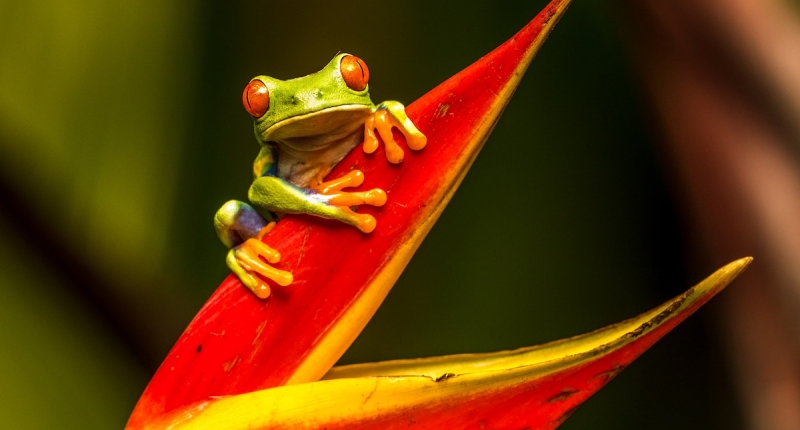The Big Picture: Why Sustain Biodiversity

It might seem strange to pose the question, why sustain biodiversity. The answers may seem obvious to some. Yet the pace of biodiversity loss continues at an unprecedented rate and without sufficient change by humans, as Robert Watson, former chair of the Intergovernmental Science-Policy Platform for Biodiversity and Ecosystem Services (IPBES), warned in a recent commentary in The Guardian.
Science alone cannot make the case for sustaining biodiversity, but it can generate important evidence for what’s at stake and what is possible. We’re in a wave of discovery about all the things biodiversity does for people – e.g., it enables more productive forests and croplands, contributes to economies, and makes people happier and healthier – and our discoveries to date still only scratch the surface.
As part of our roundtable series, The Big Picture, and in the wake of the IPBES report on biodiversity loss published earlier this year, we are diving into the what, why, and how of sustaining biodiversity, and particularly what new things synthesis science can contribute to the conversation. In this edition, three experts from different synthesis working groups share new insights that are deepening our understanding of why sustaining biodiversity is worth it.
Jane Cowles of the University of Minnesota is co-leading a team that is scaling up site-specific experiments to understand the influence of biodiversity on the production of plant biomass in ecosystems over time and across landscapes, which indicates ecosystem health. Justin Johnson of the Natural Capital Project brought his perspective as an economist to a team that developed indicators to help policymakers measure how ecosystem services, like biodiversity, affect human well-being, particularly in achieving the UN Sustainable Development Goals. Penny Langhammer – who wears hats at Global Wildlife Conservation, Amphibian Survival Alliance, and Arizona State University – co-led a team that assessed how the world’s Key Biodiversity Areas are benefitting human well-being to provide guidance for their conservation and management.
What new insights from your synthesis research are helping to build the case for why we need to sustain biodiversity?

Cowles: As ecologists look across more and more experiments and across larger spatial and temporal scales, the message is clear: biodiversity is essential for the sustainable functioning of ecosystems, especially when a broader range of systems, scales, and time frames are considered. A species may not be important under one particular context or at one particular scale, but then is a strong ecosystem service provider under a different set of conditions. This, to me, is strong evidence in support for conserving biodiversity for both nature and humans.
Johnson: Changes in the macroeconomy, such as trade policy, commodity certification or payments for ecosystem services affect biodiversity, and I’ve been looking at how. This work can not only provide early-warning projections about where biodiversity might newly be at risk, but also helps make the case for sustaining biodiversity by analyzing the costs of inaction, such as lost economic function from reduced biodiversity, and actions meant to sustain biodiversity, such as the costs of implementing programs. A critical component of this work was thinking about how to express these costs in a way that national decision makers would find useful. The SNAPP working group I helped organize, “Incorporating Ecosystem Services into the Sustainable Development Goals” was a critical step in my path to understanding how to globally model ecosystem services while still making it relevant to decision makers.
Langhammer: There are more than 16,000 Key Biodiversity Areas (KBAs) worldwide that contribute to the global persistence of biodiversity. Our working group is undertaking a global analysis of the human well-being benefits of safeguarding these sites. We used global models of carbon storage, coastal protection, nutrient retention and pollination to evaluate the current delivery of ecosystem services by KBAs, both at present and under three future scenarios to 2050 (Chaplin-Kramer et al, in press, Science). The novel angle of this research is defining and quantifying the impacts for people if these important biodiversity sites are degraded or lost altogether. The results, which are still in the works, can help decision-makers in government and civil society justify the importance of conserving these sites, avoid harmful development, attract new sources of funding for safeguarding biodiversity, and inform site management.
It seems like the evidence for why we should sustain biodiversity is clear, but do you see any holes that could really advance our understanding about what's at stake with biodiversity loss?

Langhammer: The negative impact of habitat loss and degradation on humans and other species is clear. But, as Jane alluded to earlier, research into the loss of individual species, especially those that are not apex predators or ‘keystone’ species, on other elements of biodiversity is limited. As a result, we still know very little about the impact of losing such species on the delivery of ecosystem services and human well-being benefits, aside from their importance in some cultures. This means we are losing biodiversity every day without understanding just how much is at stake for ourselves and future generations. As an example, a fungal disease of amphibians, chytridiomycosis, has caused the decline of at least 501 amphibian species worldwide, including 90 presumed extinctions, in the past half-century. Despite this catastrophic loss, conservation action and funding for amphibians lag far behind that directed towards birds and mammals, or towards iconic places and habitats. Conserving amphibians for their own sake, or because we hope to see them in the wild someday, have not been very effective at generating the level of resources needed to stem the extinction tide.
Johnson: If we truly want to reverse biodiversity loss, this will require making changes that have broad impacts on the economy. These “spill-over” effects of policies could be large, but we do not currently understand well enough how large-impact policies might affect countries’ economies, industries, or socioeconomic groups. Shoring up the evidence on this point is necessary to make sure that key decision makers – especially ones whose charge is not strictly environmental (e.g. finance ministers) – understand the full picture of costs and benefits of conservation.
Cowles: Causal interpretation is a major issue for delineating the role of biodiversity in ecosystem function and ecosystem service provision in natural systems. Often, many factors are changing simultaneously, making it hard to pinpoint exactly what part of the changes we see is due to differences in biodiversity and what part may be due to other factors. In experimental work, we can directly manipulate biodiversity – e.g., by planting communities of monocultures or high diversity – and, as such, say that our treatment (that is, the number of species planted) impacts the function of the system. In real life or at the scales necessary for informing management and policy, we cannot take this same approach. Because of this, causal interpretation is more difficult. We need to rely on robust statistical techniques that can parse correlation from causality, such as tools developed in fields such as economics, where experiments are much less common and feasible. This hurdle is not insurmountable by any means – we just need to use the right tools in the right situation.
Why do you care about sustaining biodiversity, and what gives you hope we can sustain it?

Cowles: Biodiversity is not only beautiful, interesting, and awesome, but critically important for sustaining both nature and humans. I think if we can keep talking about how sustaining biodiversity and other conservation, business, and agricultural goals align – which the research supports – we can garner support for sustaining biodiversity from a larger variety of sources.
Johnson: I care about biodiversity because I love complexity. Losing a species is one of the clearest losses in the total complexity our world has. Hope that we can sustain it is sometimes hard to see, but greater awareness of global environmental issues among current U.S. presidential primary contenders is much higher than I would have predicted, even just a year ago.
Langhammer: I want my children, and all children, to grow up on a planet teeming with life, where all kinds of amazing and beautiful creatures still thrive. Sustaining Earth’s biodiversity is necessary to sustain ourselves – physically, emotionally, spiritually, and culturally. Awareness of the importance of conservation for stabilizing the climate, maintaining biodiversity, and developing sustainably seems to be growing rapidly, with recent major investments by some governments, companies, foundations, and private individuals. For example, nine foundations recently committed $459 million for the protection and restoration of forests and their guardianship by indigenous communities to contribute to global climate action. The concern that younger generations have for the planet, and their insistence that we help them protect it, also gives me hope.
